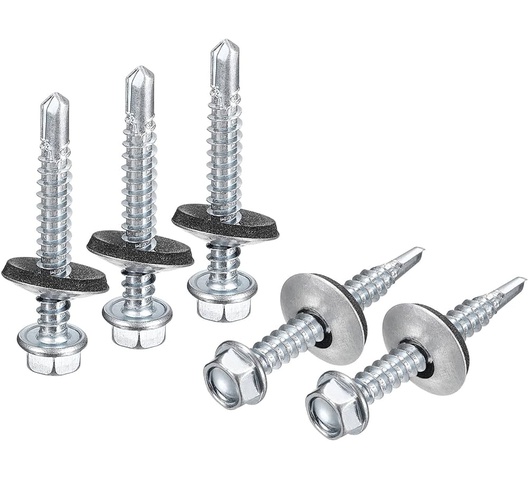
Self Drilling Hex with rubber gasket
KES 1,800
Excl. Tax
- Material: Both the screw and the metal washer are made of carbon steel, a zinc-plated surface finish, which is corrosion-resistant; the black washer is made of EPDM, which is wear-resistant and oxidation-resistant.
- Advantages: The hex washer head has a flange with an EPDM rubber washer on the bottom to prevent leaks, loosening and damage to mating surfaces. When you tighten the self-drilling screw, a flexible black EPDM rubber washer bonded to the metal washer creates a tight seal.
- Easy to use: Unlike self-tapping screws, these self-drilling screws drill a hole and tap a thread in one operation. All you need to install them with a power drive tool.
- Application: Hex head self-drilling screws are typically used in metal-to-metal and metal-to-wood applications. Widely used in the electrical and industry, most commonly on thin metals, for example with roofing, steel studs, etc.
| SKU | 4419 |
|---|
Reviews
Description
Self Drilling Hex with rubber gasket
- Thread Dia.: #12 (5.5mm); Length(not include hex head): 1-1/2"(38mm); Thread Pitch: 1.8mm; Hex Head Size: 8x5.4mm / 0.31" x 0.21"(Hex WidthxT); Flange Dia.: 11mm / 0.43"; Washer Size: 16 x 3.5mm / 0.63" x 0.14"(D*T); Screw Drilling Range (Plate Thickness): 1.75-5.25mm
- Material: Both the screw and the metal washer are made of carbon steel, a zinc-plated surface finish, which is corrosion-resistant; the black washer is made of EPDM, which is wear-resistant and oxidation-resistant.
- Advantages: The hex washer head has a flange with an EPDM rubber washer on the bottom to prevent leaks, loosening and damage to mating surfaces. When you tighten the self-drilling screw, a flexible black EPDM rubber washer bonded to the metal washer creates a tight seal.
- Easy to use: Unlike self-tapping screws, these self-drilling screws drill a hole and tap a thread in one operation. All you need to install them with a power drive tool.
- Application: Hex head self-drilling screws are typically used in metal-to-metal and metal-to-wood applications. Widely used in the electrical and industry, most commonly on thin metals, for example with roofing, steel studs, etc.
